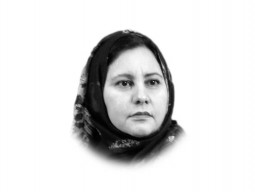
Amid the preoccupation of the government and political parties with the economic portfolio amidst very active political dynamics before the elections, I pondered a question regarding the impact of population dynamics on economic growth, wondering if the government has strategically charted the demographic course; a vital factor influencing economic ascent, as suggested by numerous politicians and senior officials. Addressing this question is no simple matter. In this article, I will examine Pakistan’s progress through the lens of its population portfolio.
In 2023, Pakistan’s population agenda was very crowded; convening the national conference on calibrating the population with resources is a major step that reflected population anxiety. The conference called for major reforms regarding the narrative, processes and policies. It is worth noting that a human rights-based approach was adopted in the conference deliberations.
The completion and endorsement of the population census is another major step achieved this year to provide informational infrastructure. The women’s convention convened by the federal ministry of health is another benchmark activity on the realization of women’s role in development. Furthermore, the conclusion of Punjab’s World Bank agreement to finance family planning is also a move in the right direction.
Sindh has achieved success in obtaining contraceptives and bolstering domestic financing. Legislative reforms, such as the Medico-legal Act of 2023, have been implemented to address resource gaps and enhance clinical management for victims of violence, complemented by the introduction of anti-rape rules in 2023. Balochistan has also witnessed a positive shift with increased domestic financing for family planning. The active involvement of parliamentarians in the population agenda, coupled with the proactive efforts of provincial departments of population and health, along with regular meetings of the Country Engagement Working Group on Family Planning, has ensured the sustained prioritization of the demographic portfolio.
The population agenda in Pakistan for the year 2023 involved three main aspects. Firstly, most of the activities were aimed at the quantitative dimension of the population, such as its size, growth and fertility level. Secondly, most of the efforts were focused on the core population agenda, both in terms of scope and operational level. The current approach only deals with the effects of the problem in the current generation without addressing the root causes that may lead to similar issues in future generations. The approach overlooks the issues related to sexual and reproductive health for young people, which may lead to challenges in the future. Lastly, the top-down approach was used at both the federal and provincial levels.
Pakistan is facing additional challenges related to quality side in terms of human capital including education, knowledge and skills, in addition to social capital including the utilization of interpersonal and group relationships, potential groups, community resources and social structures at the community level. The population agenda also requires an incubating environment at the policy and legal fronts including changes in federal financing, taxation system, and a review of the center of gravity related to the decision-making at the district and tehsil level. These additional efforts are needed to facilitate the transition from demographic anxiety to demographic resilience that involves an aspiration and ability to predict demographic shifts, understand their implications and develop policy responses that are based on evidence and human rights by moving beyond narrow quick-fix approaches focused on population numbers towards comprehensive population and social policies aimed at ensuring prosperity and well-being.
A national visionary approach based on consensus around these matters is still needed to address existing gaps. Such a vision is instrumental to making the demographic pathway an enabler for economic rise because it will pave the way for the demographic pathway and unify the direction of winds that push population ship forward. Another unfinished business is related to the upstream mega initiatives that affect the demographic pathway including a drastic change in the National Financial Commission (NFC) to become target-driven instead of demand-driven, and to invest in women’s and girls’ skills, capacities, rights and opportunities. To reduce unintended pregnancies, it is important to address social norms and bridge the gender gap when it comes to fertility choices and contraceptive use. This can be done by empowering Tehsil Headquarters Hospitals (THQ) to increase communities’ access to contraception. The goal is to encourage women, men and couples to make informed decisions about their reproductive health. To achieve this, it’s crucial to ensure a harmonious relationship between upstream efforts and service delivery.
In conclusion, Pakistan’s harvest in 2023 indicates the transition in the country’s efforts from population anxiety to demographic resilience. However, the achievements are yet to materialize. To achieve a successful outcome, it is necessary to coordinate all input efforts on a harmonized platform that is supported with a national inclusive vision. This vision should be based on the quality and quantity of the population and enabled by the allocation of resources and orchestrated efforts from the government, private sector, civil society, media and community. Soft power is also needed to achieve this goal. Pakistan is still on the runway, let us hope that new political governments at national and provincial level will prioritize and accelerate the unfinished population agenda for improving the lives of the people of Pakistan as they committed in their party manifestos. I hope the kickoff is launched smoothly for a great soar toward prosperity.
Published in The Express Tribune, December 28th, 2023.
Like Opinion & Editorial on Facebook, follow @ETOpEd on Twitter to receive all updates on all our daily pieces.









1729685382-0/Untitled-design-(57)1729685382-0-270x192.webp)











COMMENTS
Comments are moderated and generally will be posted if they are on-topic and not abusive.
For more information, please see our Comments FAQ